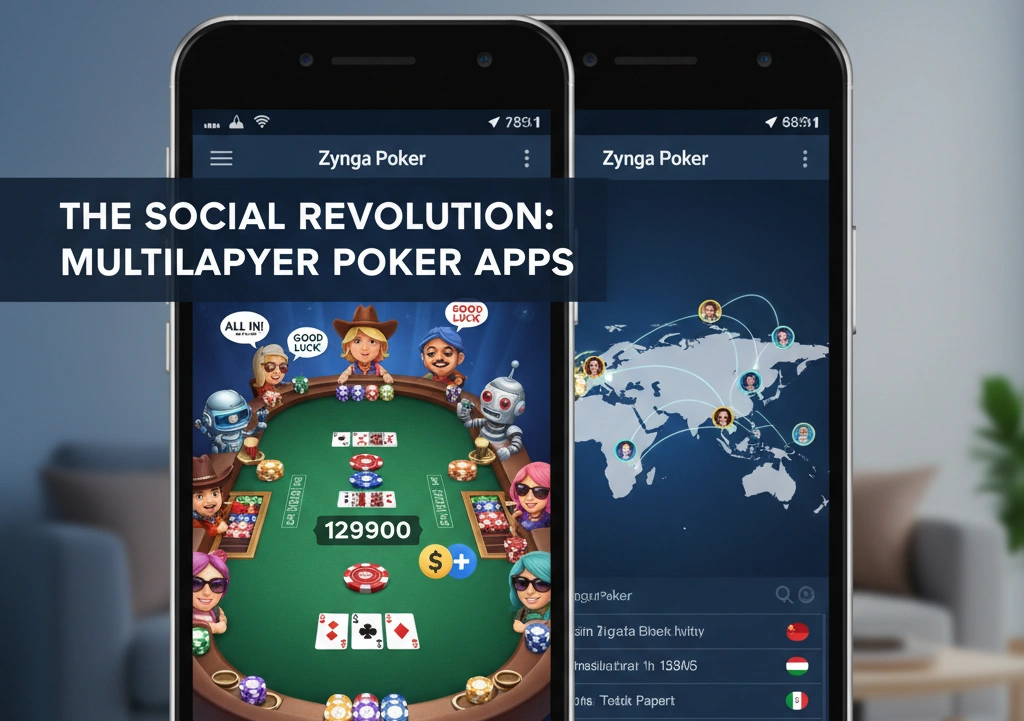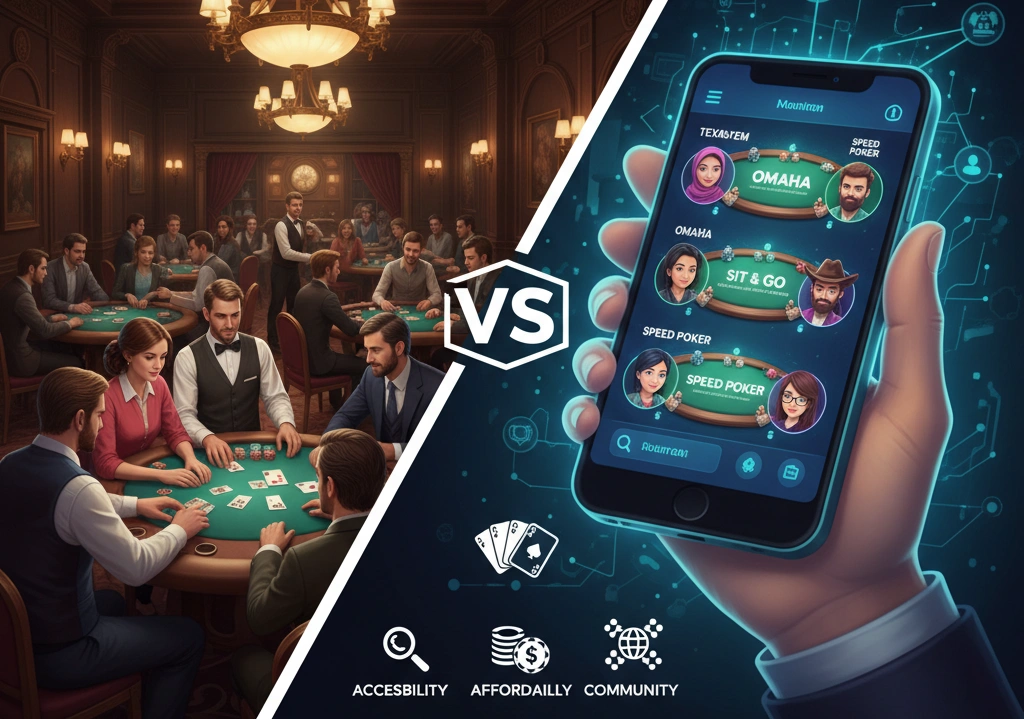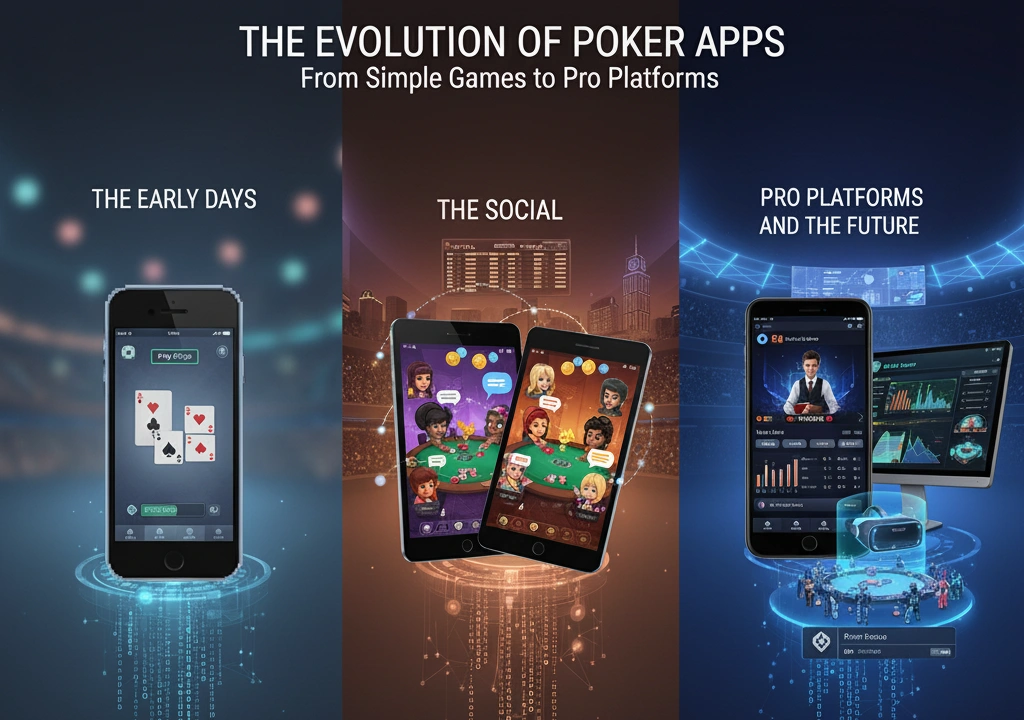The Evolution of Poker Apps: From Simple Games to Pro Platforms
Poker has always been more than just a card game. It’s a test of skill, patience, psychology, and decision-making. Traditionally played in casinos, card rooms, and home games, poker has transformed dramatically with the advent of technology. The rise of poker apps has pushed the game into the digital age, making it more accessible, engaging, and competitive than ever before. What started as basic card simulators has now evolved into advanced platforms with live features, global tournaments, and professional-level tools.
In this article, we’ll explore the journey of poker apps — how they began, what fueled their growth, and the features that now define them as professional platforms for both casual and competitive players.
The Early Days: Simple Poker Games on Mobile
When smartphones first gained popularity in the late 2000s, poker apps were among the earliest games available in app stores. At that time, these apps were relatively basic, often offering single-player experiences against computer opponents.
Key characteristics of early poker apps included:
- Simplistic Graphics: The focus was on replicating the feel of a deck of cards on a small screen rather than immersive design.
- Single-Player Play: Most apps allowed players to test their skills against AI bots rather than real opponents.
- Free Play Chips: Early apps rarely used real money; they instead offered play-money chips to simulate the experience.
These versions weren’t designed for serious competition. Instead, they served as casual entertainment, a way for players to practice hands or pass the time. Yet, these early beginnings laid the groundwork for the massive poker ecosystem we see today.
The Social Revolution: Multiplayer Poker Apps

As mobile internet connectivity improved, developers began integrating multiplayer features into poker apps. This marked the beginning of poker as a social gaming experience. Suddenly, players could compete against friends or strangers from around the world in real time.
Some of the innovations during this phase included:
- Global Player Pools: Apps could match players of different skill levels and backgrounds instantly.
- Chat Functions and Avatars: Adding a social layer made the experience closer to playing at a real table.
- Freemium Models: Players could enjoy free chips but also purchase extras through in-app purchases, helping apps become profitable.
Games like Zynga Poker popularized this wave, attracting millions of casual users. While still focused on fun rather than high-stakes play, these apps proved that poker could thrive as a social experience in the mobile era.
The Leap to Real Money: Legitimizing Online Poker

The next stage of poker app evolution was the integration of real-money gameplay. This was a turning point that brought poker apps into the spotlight as legitimate gaming platforms rather than just casual pastimes.
Several factors contributed to this shift:
- Regulation and Licensing: Jurisdictions around the world began creating legal frameworks for online gambling, giving apps credibility.
- Payment Gateways: Secure digital payment systems allowed players to deposit and withdraw funds safely.
- Competitive Tournaments: Apps started hosting real-money tournaments, from small buy-ins to high-stakes events.
This leap attracted not only recreational players but also professionals looking to hone their craft. Real-money apps blurred the line between casual gaming and professional poker, leading to the boom of online tournaments and live-event qualifiers.
Advanced Features: Transforming Apps into Pro Platforms
As technology advanced, poker apps moved far beyond being simple gaming tools. Today’s leading apps resemble professional platforms, packed with features designed for serious players.
1. Live Dealer and Streaming Integration
Many modern apps integrate live-streamed dealers, making online play feel nearly identical to sitting at a real table. This adds authenticity and builds trust among players.
2. Data and Statistics
Apps now track player history, win rates, hand frequencies, and betting tendencies. These insights help players refine their strategies, much like professional tools used in live poker analysis.
3. Cross-Platform Play
Players can seamlessly switch between smartphones, tablets, and desktops without losing progress. This flexibility allows professionals to play on the go.
4. Customization and Training Modes
Many apps now include tutorial sections, hand replays, and even AI-based coaching. This makes them not just for playing but for learning and mastering poker strategy.
5. Security Enhancements
Modern poker apps use encryption, anti-collusion measures, and random number generators (RNGs) to ensure fair play and safeguard user funds.
The Rise of Esports-Style Poker Competitions
Poker’s digital evolution has also brought it closer to the esports world. Apps now host massive online tournaments with prize pools that rival traditional casino events. For example, online qualifiers have helped players enter prestigious live tournaments like the World Series of Poker (WSOP).
With live leaderboards, streaming integrations, and international player participation, poker apps have become competitive arenas where amateurs and pros alike can test their skills.
Mobile Apps vs. Traditional Poker Rooms

While traditional casinos and poker rooms remain popular, poker apps have distinct advantages:
- Accessibility: Anyone with a smartphone can join a game instantly.
- Variety: Apps offer multiple formats like Texas Hold’em, Omaha, Sit & Go’s, and fast-fold variations.
- Affordability: Players can enter games at lower stakes than in physical casinos.
- Community: Digital platforms allow global interaction, breaking down geographical barriers.
For many, poker apps serve as both practice grounds and competitive platforms, offering experiences tailored to casual players and professionals alike.
The Future of Poker Apps: What’s Next?
The evolution of poker apps is far from over. Several trends are shaping the next phase:
- Virtual Reality (VR) Poker
Immersive VR environments will allow players to interact as avatars, creating a lifelike casino atmosphere from home. - Artificial Intelligence Coaching
AI tools will analyze player behavior in real time, offering tips and strategy adjustments during practice games. - Blockchain and Cryptocurrency Integration
Decentralized platforms will provide even greater transparency, with cryptocurrencies allowing faster, borderless transactions. - Hybrid Live-Digital Events
Poker apps will increasingly serve as bridges between online and live tournaments, with qualifiers and hybrid events gaining popularity.
Conclusion
The evolution of poker apps reflects the broader digital transformation of gaming. What began as simple card simulators on early smartphones has grown into sophisticated, professional-grade platforms that rival traditional poker rooms. With features like live dealer integration, real-money tournaments, AI coaching, and global player pools, poker apps now cater to everyone — from casual enthusiasts to seasoned pros.
As technology continues to advance, the line between digital and live poker will blur even further, making poker more accessible, competitive, and engaging than ever before. Whether you’re looking to play for fun or sharpen your skills for high-stakes competition, poker apps have truly become the gateway to the modern poker experience.







